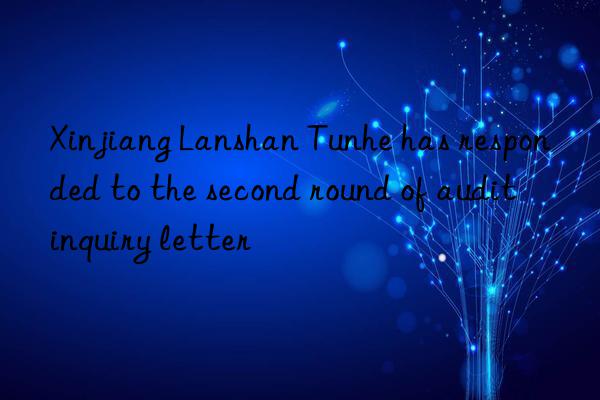
Xinjiang Lanshan Tunhe Technology Co., Ltd. updated the listing application review status on April 11. The company has responded to the second round of review inquiry letters. The main questions answered are about operating income, about Major customers, about raw material procurement, etc.
It is understood that Lanshan Tunhe is mainly engaged in the integrated industrial chain of fine chemicals and high-end chemical new materials. A series of biodegradable materials/PBT/PTMEG/TPEE" upstream and downstream integrated industrial chain, the product line covers fine chemical basic raw materials, biodegradable materials, new chemical materials and new energy-saving and environmentally friendly building materials, etc.
According to the company's audited financial statements in 2022, the company's annual operating income was 5,828,659,400 yuan, the total profit was 1,296,318,100 yuan, and the net profit attributable to shareholders of the parent company was 742.7336 million yuan. Compared with 2021, affected by multiple factors such as the macroeconomic situation and downstream market prosperity, the issuer's 2022 The annual operating income and net profit attributable to shareholders of the parent company have decreased compared with last year, but a relatively considerable profit scale has been achieved throughout the year.
With the revival of the confidence of downstream manufacturers, the recovery of logistics and transportation and downstream demand, the unfavorable factors causing the price drop of major products are gradually being eliminated, and the prices of major products have rebounded significantly. Since entering January 2023, BDO The main downstream spandex industry manufacturers of PTMEG and PTMEG have started to work, and the downstream demand has gradually increased. According to the prediction of SunSirs, the spandex market will continue to fluctuate and rise in the short term. The recovery of the downstream industry will drive the upstream raw material BDO and The demand for products such as PTMEG has increased, and the prices of related products have increased, bringing strong support for the company's future performance.
During the reporting period, among the major customers of the issuer, there were 5 major customers who became the major customers of the issuer shortly after their establishment. The main reason is that the issuer expanded its sales channels, so it added some dealers or traders, and there were no customers with low registered capital.
Mingcheng Petrochemical's gross profit margin in 2021 is relatively high, which is mainly affected by differences in specific sales product varieties. In 2021, the main distribution products of Mingcheng Petrochemical are ordinary and high-power EPS, and the products sold are mainly 2020 EPS. Low-priced inventory when annual raw material costs are low. In 2021, the main product type sold by the company to EPS distributors is flame-retardant EPS, accounting for 72.55%. The sales volume is relatively large, and the low-priced inventory of such products is small. Therefore, in 2021, the price of raw materials will rise, and the low-priced inventory of ordinary and high-multiple EPS at the beginning of the period is relatively large. The gross profit margin of Mingcheng Petrochemical is higher than that of the overall dealers. In 2022, the company's sales to Mingcheng Petrochemical are mainly ordinary and high-fold EPS, and the market price is low, so the gross profit rate is lower than the average gross profit rate of dealers.
The issuer purchases main raw materials with lower prices due to its regional advantages. During the reporting period, the purchase amount accounted for 28.99%, 32.54% and 32.54% of the total raw material purchases respectively. 31.69%, accounting for 26.89%, 37.34% and 32.01% of direct materials in the cost of main operations.
Due to the issuer's regional advantages, the purchase price of some raw materials is relatively low, so the issuer can effectively reduce operating costs and increase gross profit margins, so that the issuer can be in a more powerful competitive position in the price competition. For example: when the market price is lower than the production cost of the competitor, the competitor will face the choice of losing production or reducing the operating rate, while the issuer can take advantage of its own cheap raw material procurement advantages, and some raw materials can be produced by itself through its own industrial chain advantages. production, so a certain profit can still be maintained.



 微信扫一扫打赏
微信扫一扫打赏
